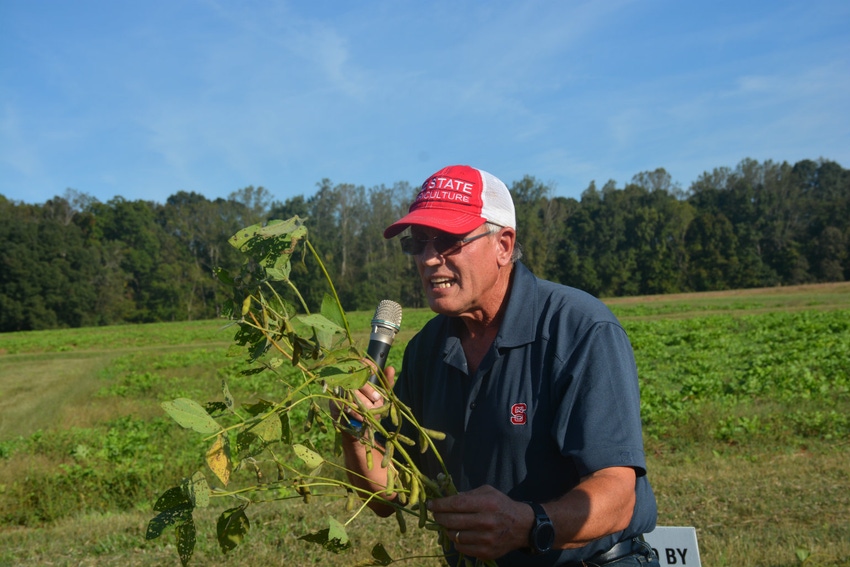
For farmers to maximize their soybean yields, they need to do the math.
Speaking at the recent Piedmont Soybean Field Day at the Piedmont Research Station in Salisbury, N.C., Dr. Ron Heiniger, North Carolina State University Extension cropping systems specialist, said four components make up the mathematics of soybean yield: Nodes per acre, pods per node, beans per pod and seed weight.
“The math is complicated because these factors interact with each other. The more nodes I put out per acre the more difficulty I have putting on pods per node,” Heiniger said.
Nodes per acre is critical and to understand nodes per acre farmers need to remember June 21, the longest day of the year. After June 21, the nights begin to lengthen, and flowering is triggered on soybean plants.
“For a determinant variety, flowering stops node production. That’s why it’s important to know that date because it will be when a determinant variety stops all node production by the soybean plant. For an indeterminant variety, Groups II and IV, we can still get more nodes per acre, but the plants slow down node production. June 21 is a seminal day. It also has an impact on pods per node,” Heiniger said.
To maximize light to the soybean plant and to maximize nodes and pods, Heiniger encourages farmers to plant early. It is critical to get as much time between the planting date and flowering to get more nodes on the soybean plant.
The June 21 date is critical for determining the number of pods a soybean plant will produce at each node. Heiniger said farmers should aim for having plants flower as close to June 21 as they can. Light is a critical factor in determining pods per node. It is critical to get light all the way down into the canopy. Row spacing is important for ensuring this.
Quick emergence is also important. “The faster we can get that soybean plant out of the ground and start putting on leaves, the faster it’s going to start putting on nodes,” Heinigeer said.
Moreover, Heiniger reminded field day attendees of the dictum laid out by Dr. Jim Dunphy, North Carolina State’s recently retired Extension soybean specialist, on the importance of soybean plant height. Dunphy continually emphasized soybean plants need to be three feet tall and lapped in the center.
Three-foot soybean plants allow enough light to get to all the nodes to put on pods with enough branching and plant size to maximize nodes per acre, Heiniger said.
Finally, nutrients are critical in determining how many pods each node will sustain. “Most potassium is taken up by the soybean plant after flowering. We have to make sure we have nutrients at flowering. This is critical for putting on pods per node,” Heiniger said.
About the Author(s)
You May Also Like






